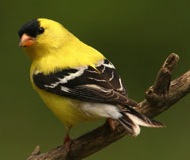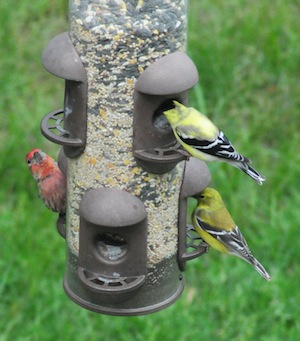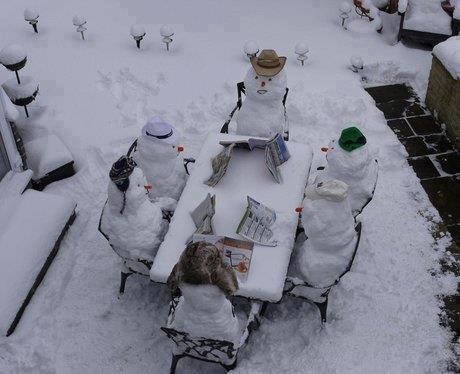The American Goldfinch and a Nyjer Feeder

I don’t know much about them, but I have heard that they wait to nest until dandelion thistle is available. Any truth to this?
“American Goldfinches are really interesting birds. I don’t think it’s understood scientifically, but they do time their nesting very closely to the flowering of the entire true thistle family, although they eat a wide variety of small seeds. (They aren’t dependent on dandelion seeds, since dandelions go to seed all season long.) They are almost completely dependent on a seed diet, even feeding their nestlings a seed slurry from their crops (unlike most songbirds–even the seed-eaters–which feed insects to their kids). In part, it is believed that they can feed seeds to growing nestlings because thistle seeds, easily plucked from a nyjer feeder, are so high in protein, compared to other seeds. We used to have a real struggle raising orphaned goldfinches in rehab until we understood the importance of the high protein content of the thistle seeds with which the babies grow up. We used to feed them a seed-based formula, since that’s what the adults do, and they typically failed to thrive. However, once we switched to the insectivorous formula (which doesn’t contain insects per se but has more protein than the seed-based formula does), many of the problems resolved.

This interrelationship with the thistle family makes American Goldfinches pretty much the latest avian breeder in North America, since thistles bloom very late in the season (late July and early August here). At the wildlife rehab center, you know the breeding season is coming to a close when you start to hear those incessant, piercing baby contact call notes ringing through the center halls, boring a hole into your so-totally-done-with-baby-bird-season brain. Music to my ears personally.
Not much action in the nest boxes in central Colorado, although we have one completed White-breasted Nuthatch nest and one that just needs the inner lining. Juniper Titmice and Mountain Chickadees are singing; I hear the downward “phew, phew” calls of Mountain Bluebirds moving around the property. The Golden Eagle in the rock cliff nest over the Arkansas River has been incubating for ~4 weeks, so chicks should hatch in the next couple of weeks. The American Dippers nesting at the bridge across the Arkansas are feeding noisy chicks and the adults are nearly a constant blur in and out of the river scarfing up aquatic insects for them all. Last week in Coaldale, we had ~10″ of snow (only 1-4″ predicted) 
Posted by Tina Mitchell, Coaldale, CO
